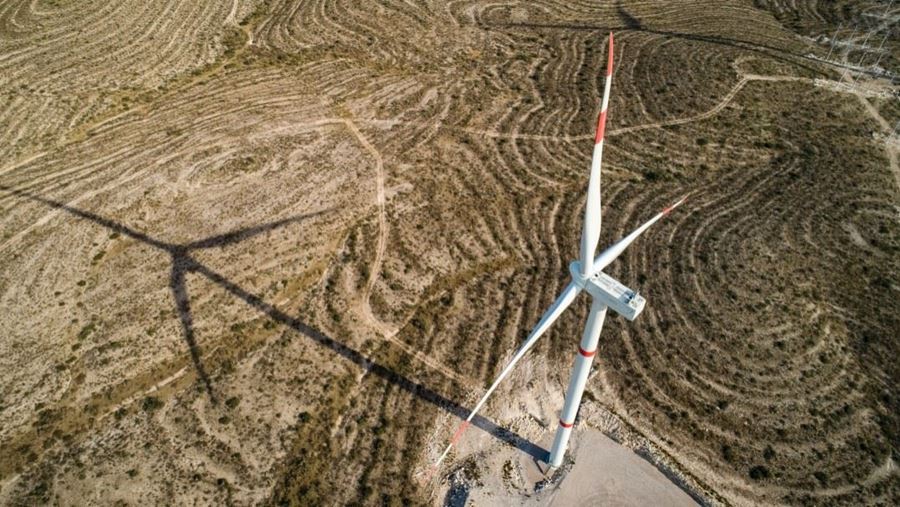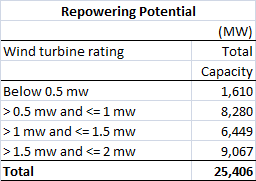Over 60 per cent of India’s wind power capacity has repowering potential
- October 22, 2022

Over 60 per cent of India’s total wind power generation capacity has the potential to be repowered, a recent government document suggests.
The Union ministry of new and renewable energy (MNRE) has come out with a draft repowering policy on which it is current seeking public opinion. To be officially called “National Repowering Policy for Wind Power Projects – 2022”, this policy will be in supersession of its predecessor “Policy for Repowering of the Wind Projects” that was issued on August 5, 2016.
The policy seeks to formulate guidelines for repowering of installed wind turbines with a view to enhancing the overall capacity of the wind farm, without impinging on additional geographical area.
In other words, it would seek to maximum the electricity generation (yield, in kwh) per sqkm of project area.
The policy seeks to replace turbines of less than 2 mw capacity with those of 3 mw or higher. Such repowered turbines must enhance the old aggregate capacity of the wind farm by at least 50 per cent. Detailed guidelines have been provided for repowering of wind turbines of projects owned by a single owner, or a group of wind farms owned by different owners but sharing common evacuation infrastructure (pooling substation).
Repowering potential
 As of August 31, 2022, India’s total wind power generation capacity was 41.4 GW, mainly spread over wind-rich states like Tamil Nadu, Maharashtra, Gujarat, Rajasthan, Karnataka, etc. Of this total capacity, around 25.41 GW (see table) came from wind turbines of individual rating less than 2 mw. This means that 61 per cent of the existing wind capacity has repowering potential.
As of August 31, 2022, India’s total wind power generation capacity was 41.4 GW, mainly spread over wind-rich states like Tamil Nadu, Maharashtra, Gujarat, Rajasthan, Karnataka, etc. Of this total capacity, around 25.41 GW (see table) came from wind turbines of individual rating less than 2 mw. This means that 61 per cent of the existing wind capacity has repowering potential.
Assuming that this entire capacity is repowered as per the guidelines, a minimum of 50 per cent capacity enhancement can be expected. Thus, the existing 25.41 GW of wind capacity coming from sub-2 mw can be enhanced to a minimum of 38 GW, at least from a technical standpoint.
India’s total wind power capacity can grow to around 54 GW (38 GW of repowered capacity plus 16 GW of capacity coming from turbines of 2 mw or more) from the current 41.4 GW.
Hence, India can potentially increase its current wind power capacity by around 30 per cent without adding to the geographical footprint of existing wind farms.
Also read: GE Renewable Energy Lands Mandate For Wind Turbines From Continuum
Rationale behind repowering
India has started developing wind power capacity since the 1980s. However, most of the wind turbines installed up to the year 2000 are of sub-mw capacity, and are at sites having high wind energy potential.
Some of the old wind turbines have already completed their design life while some are approaching the end of their design life. These wind turbines are not only inefficient in comparison to the latest technology but also have lower hub heights (in the range of 30m- 60m) in comparison to hub heights of 120-140m range being installed these days. The lower hub height wind turbines are not able to harness the higher wind speeds available at higher hub heights.
India currently has access to latest wind power technology and produces wind turbines of 3 mw and higher.


